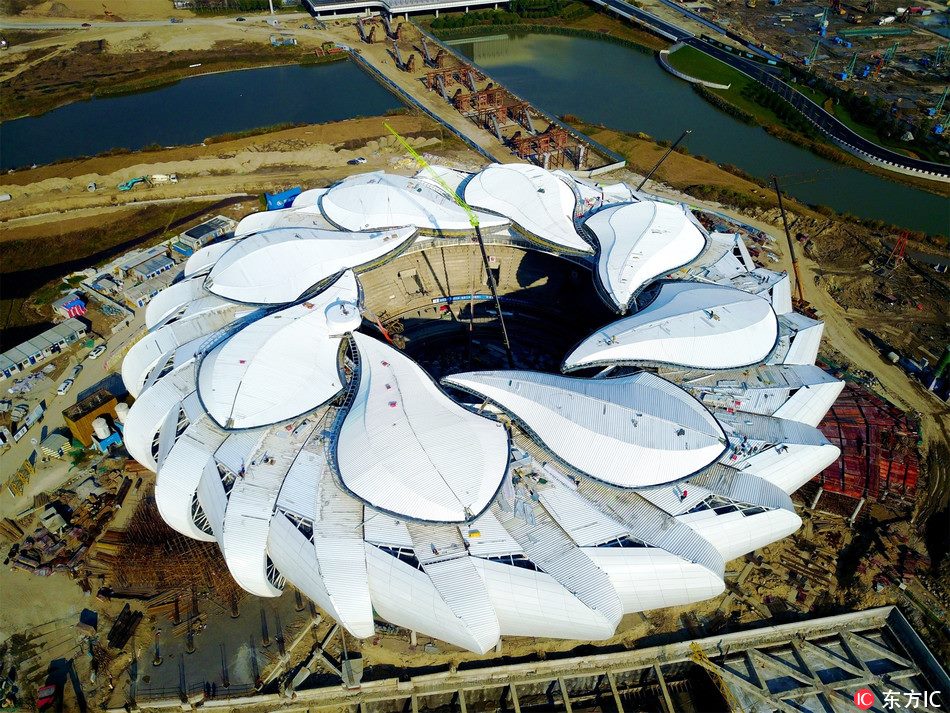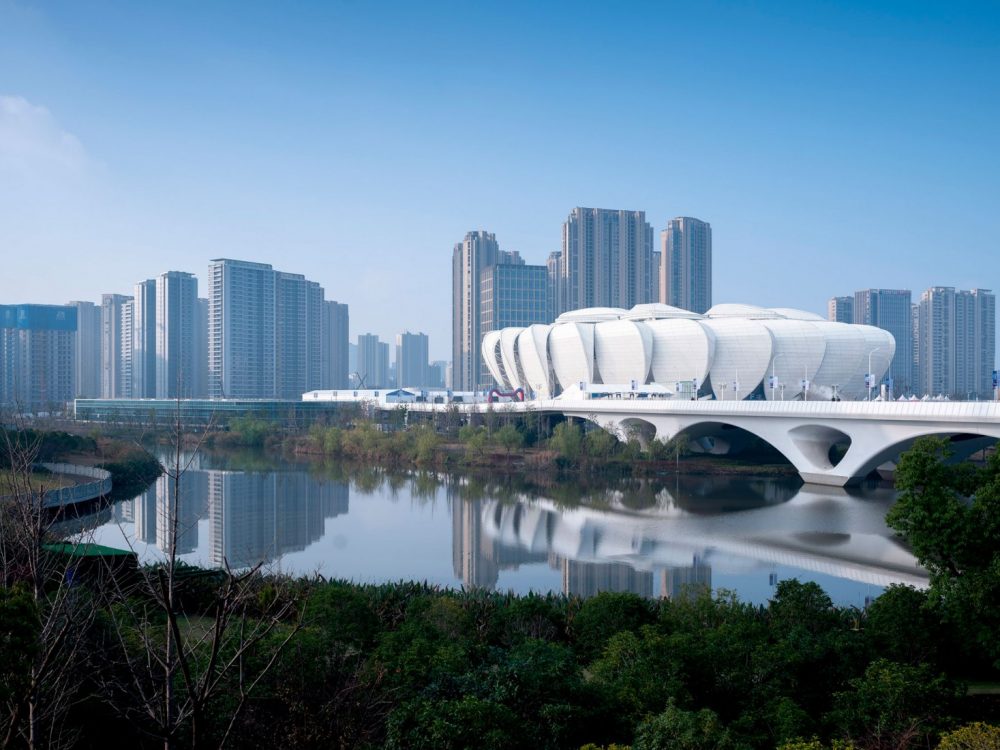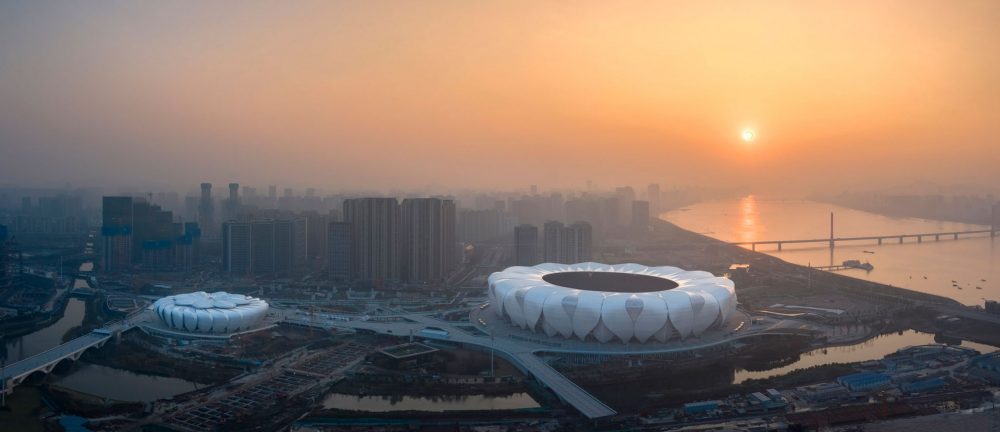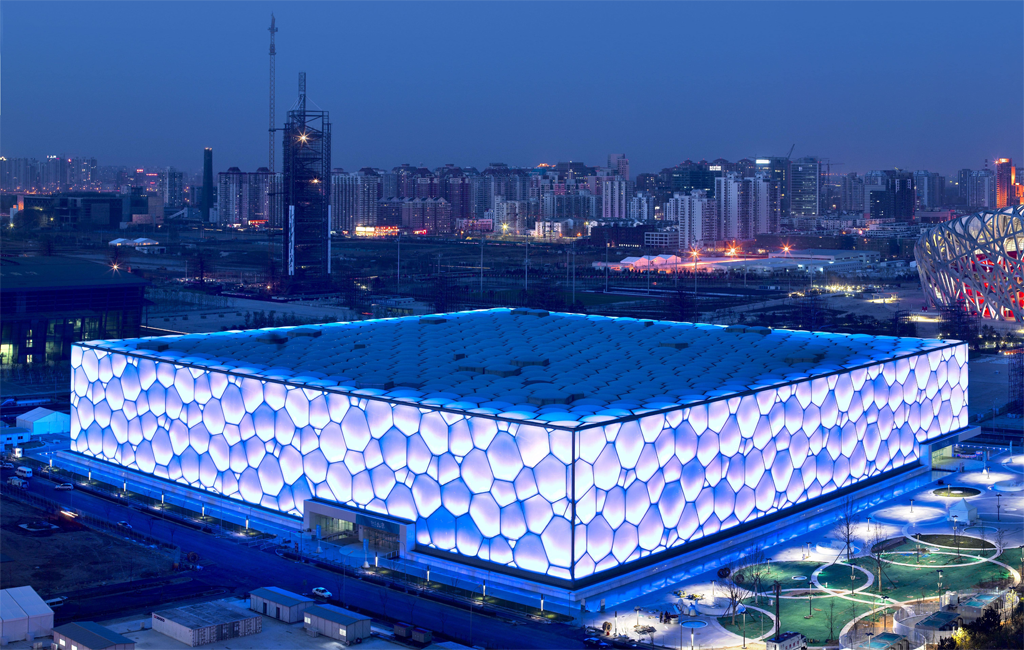Hangzhou Tennis Center

Following the footsteps of many cities throughout China undergoing rapid urban transition is Hangzhou, a city celebrated for its beautiful temples and gardens with a lotus-laden lake as a familiar centerpiece.
Blooming amid Hangzhou’s 400,000-sqm sports and entertainment hub is the Hangzhou Tennis Center – a 220,000-sqm facility which is considered to be one of the most significant examples of parametric architecture around the world. Elegantly-curved lotus flowers indigenous of the West Lake drew the conceptual inspiration for this 10,000-seat facility, evoking scenic and tranquil views of the nearby UNESCO World Heritage Site.
The tennis center stands as a part of a greater, three-layered master plan for the Hangzhou Olympic Sports Center, which includes an extensive retail development, a public recreation park, and an 80,000-seat Olympic-size stadium – the latter of which sharing a similar architectural language of repetitive geometries as the tennis center.
On the ground level, a network of public recreation activities was integrated into the landscape via multiple plazas, gardens, and pathways designed for both extreme and alternative sports. An above-grade platform defines the sports boulevard, which connects the main stadium and the tennis center. Ultimately, an extensive below-grade retail pavilion was then activated by a series of courtyards and sunken spaces, offering boutique stores, dining spaces, and a multiplex cinema.
Outside, the conceptual inspiration was translated into the facility’s visual identity by creating a circular array of twenty-four truss modules known as “petals.” Aside from enclosing the seating bowl via a large-scale repetitive pattern, its outer shell offered rain and sun protection to its spectators.
Parametric design influenced by the increasing global demand for steel encouraged a coordinated system of steel shell and concrete bowl linked for maximized steel use and stability. Due to its parametric nature, design changes and quality control can be completed within shorter turnaround periods. These collective efforts for steel optimization reduced the project’s steel consumption by 67% of its initially estimated amount – a successful implementation of true, parametric design.
Driven by two rational initiatives of finding the perfect, innovative skin while reducing steel consumption, the Hangzhou Tennis Center continues to bloom as an architectural icon where new design tools were developed, integrated, and shared to translate organic forms of nature into a symbol of special architectural and civic value in China.
- China
- NBBJ
- http://www.nbbj.com/work/hangzhou-stadium/






Category Sports




